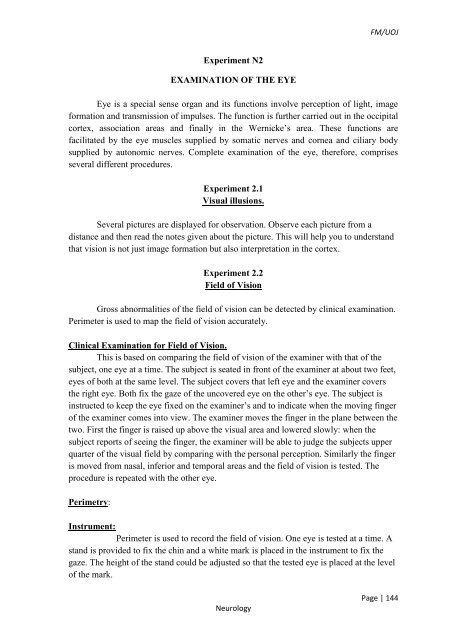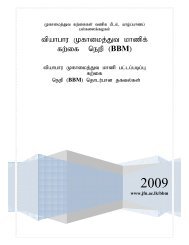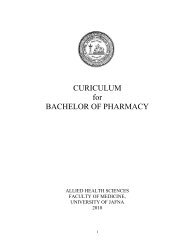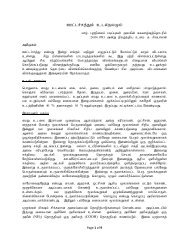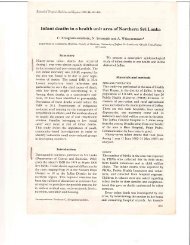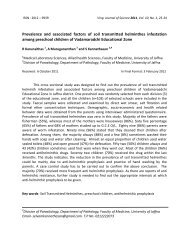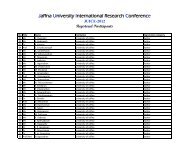MANUAL PHYSIOLOGY PRACTICAL - Repository:The Medical ...
MANUAL PHYSIOLOGY PRACTICAL - Repository:The Medical ...
MANUAL PHYSIOLOGY PRACTICAL - Repository:The Medical ...
You also want an ePaper? Increase the reach of your titles
YUMPU automatically turns print PDFs into web optimized ePapers that Google loves.
FM/UOJ<br />
Experiment N2<br />
EXAMINATION OF THE EYE<br />
Eye is a special sense organ and its functions involve perception of light, image<br />
formation and transmission of impulses. <strong>The</strong> function is further carried out in the occipital<br />
cortex, association areas and finally in the Wernicke’s area. <strong>The</strong>se functions are<br />
facilitated by the eye muscles supplied by somatic nerves and cornea and ciliary body<br />
supplied by autonomic nerves. Complete examination of the eye, therefore, comprises<br />
several different procedures.<br />
Experiment 2.1<br />
Visual illusions.<br />
Several pictures are displayed for observation. Observe each picture from a<br />
distance and then read the notes given about the picture. This will help you to understand<br />
that vision is not just image formation but also interpretation in the cortex.<br />
Experiment 2.2<br />
Field of Vision<br />
Gross abnormalities of the field of vision can be detected by clinical examination.<br />
Perimeter is used to map the field of vision accurately.<br />
Clinical Examination for Field of Vision.<br />
This is based on comparing the field of vision of the examiner with that of the<br />
subject, one eye at a time. <strong>The</strong> subject is seated in front of the examiner at about two feet,<br />
eyes of both at the same level. <strong>The</strong> subject covers that left eye and the examiner covers<br />
the right eye. Both fix the gaze of the uncovered eye on the other’s eye. <strong>The</strong> subject is<br />
instructed to keep the eye fixed on the examiner’s and to indicate when the moving finger<br />
of the examiner comes into view. <strong>The</strong> examiner moves the finger in the plane between the<br />
two. First the finger is raised up above the visual area and lowered slowly: when the<br />
subject reports of seeing the finger, the examiner will be able to judge the subjects upper<br />
quarter of the visual field by comparing with the personal perception. Similarly the finger<br />
is moved from nasal, inferior and temporal areas and the field of vision is tested. <strong>The</strong><br />
procedure is repeated with the other eye.<br />
Perimetry:<br />
Instrument:<br />
Perimeter is used to record the field of vision. One eye is tested at a time. A<br />
stand is provided to fix the chin and a white mark is placed in the instrument to fix the<br />
gaze. <strong>The</strong> height of the stand could be adjusted so that the tested eye is placed at the level<br />
of the mark.<br />
Neurology<br />
Page | 144


